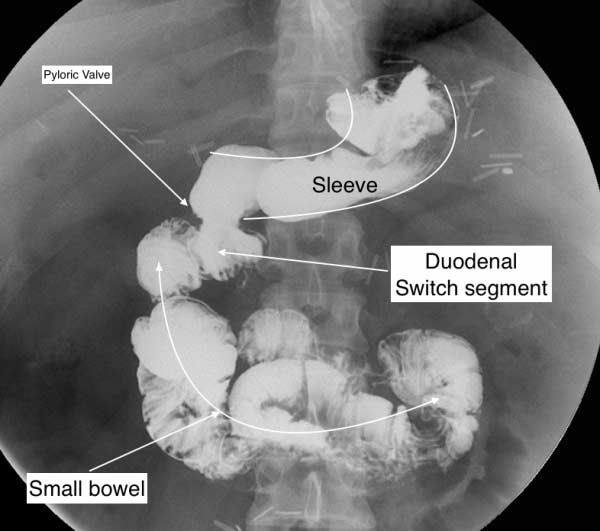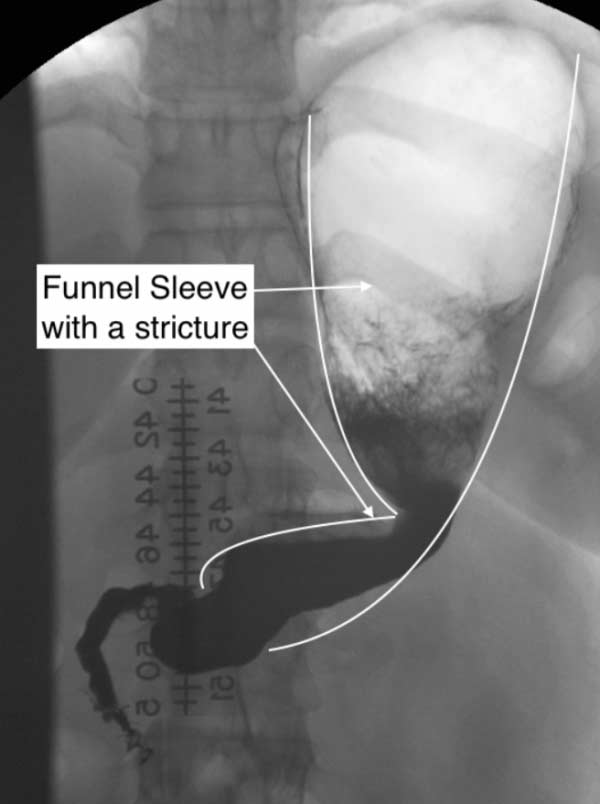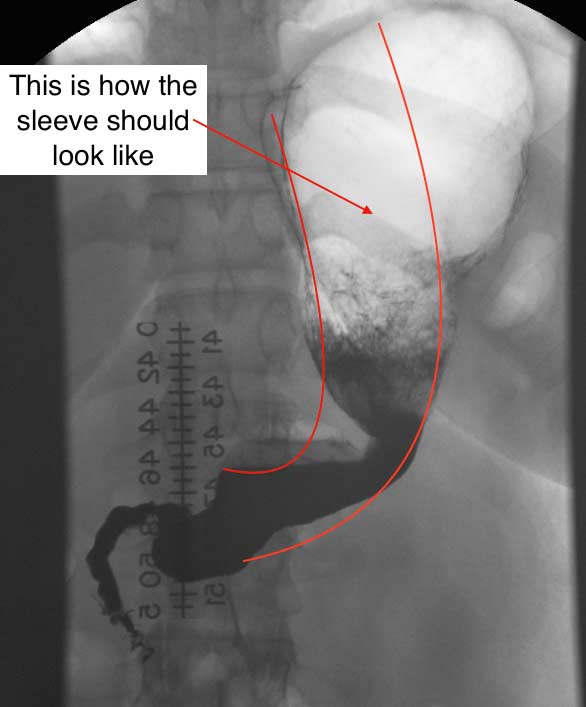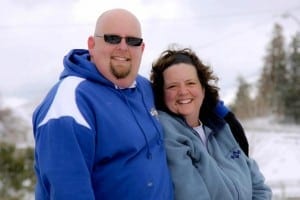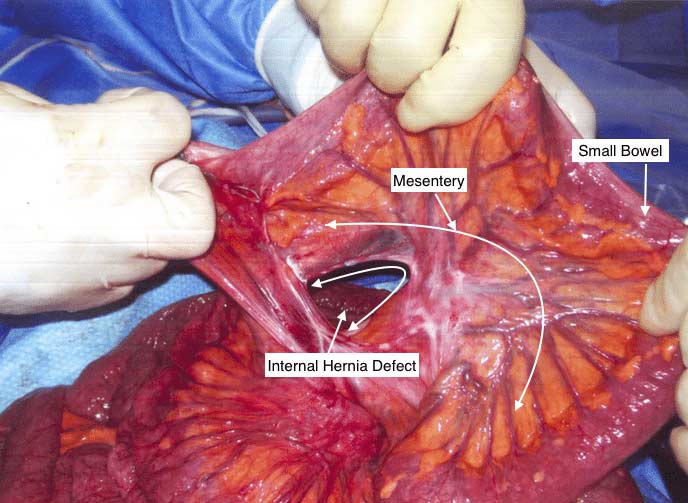Category: Weight Loss Surgery
Sleep Apnea
January 27, 2016 8:11 am
Snoring is often viewed as an inconvenience but it can be a potentially serious issue. It may be the presenting sign of a condition known as Sleep Apnea. Unfortunately, a serious sleeping condition often gets overlooked, which can triple the risk of death for the affected! Certain signs such as consistent loud snoring, daytime fatigue, and weight gain may be indications of this serious illness.
Sleep Apnea is usually chronic issues that results in one or more pauses in breathing during sleep. People with this disorder can repeatedly stop breathing while sleeping which usually results in a reduced oxygen supply to the brain and the tissues of the body.
Each pause in breathing is called an “apnea” and can last for several seconds to several minutes. When breathing is paused, carbon dioxide builds up in the bloodstream and chemoreceptors in the blood stream instantly respond to the high carbon dioxide levels. The brain is then signaled to wake the sleeping person and breathe in air in order to release the carbon dioxide built up. Breathing normally restores oxygen levels and the person falls asleep again.
Symptoms of Sleep Apnea:
- Loud snoring, which is usually more prominent in obstructive sleep apnea
- Episodes of breathing cessation during sleep witnessed by another person
- Abrupt awakenings accompanied by shortness of breath, which more likely indicates central sleep apnea
- Abrupt awakenings with a rapid pounding or racing heart rate
- Awakening with a dry mouth or sore throat
- Morning headache
- Difficulty staying asleep (insomnia)
- Excessive daytime sleepiness (hypersomnia)
- Attention problems
- Irritability
Complications of sleep apnea can result in a variety of health problems, including:
- High blood pressure
- Stroke
- Arrhythmias
- Obesity
- Heart Problems
- Diabetes
- Depression
- Headache
- Weight Gain
Obesity can cause a specific type of Sleep Apnea called Obstructive Sleep Apnea. Obstructive Sleep Apnea (OSA) is a common chronic disorder that often requires lifelong care. It is well documented that daytime fatigue can be prevalent in obese patients even though they may not demonstrate symptoms of sleep apnea. However, there is strong data demonstrating the fact that obese patients run a proportionately much higher risk of having sleep apnea.
Bariatric or Weight loss surgery has been shown to be an effective treatment for OSA in patients who are obese and often also resolves the underlying co-morbidities of sleep apnea. While scientific reasoning for this requires further study it is theorized that the weight loss is associated with a decrease in upper airway collapsibility and obstruction mostly caused by tissues size, which is one of the major causes of Obstructive Sleep Apnea.
Effective weight loss through bariatric surgery has helped many patients achieve complete resolution and improvement of their co-morbidities such as diabetes, hyperlipidemia, hypertension, and obstructive sleep apnea. Studies show sleep investigations performed approximately one year after the bariatric surgery revealed a significant decrease in the number of “apnea” episodes per hour of sleep and an improvement in all sleep quality related measurements as well. Bariatric surgery is perfectly suited for obese patients with OSA.
The correlation between Sleep Apnea and obesity has been well documented and supported through modern science. Clinical data, medical trials, and patient testimonials all underscore major improvements in the symptoms of Sleep Apnea after bariatric surgery.
2016 Back on Track Giveaway!Exclusive Member Content
January 16, 2016 1:43 pm
2015 ASMBS Summary
November 11, 2015 7:31 am
The 2015 ASMBS meeting was held November 2-6, 2015. It was combined with TOS (The Obesity Society) and had more than 5,600 attendees from all over the world in every aspect of obesity treatment. There were some interesting additions and deletions from this meeting compared to the past.
The one sentence that comes to my mind is “I told you so”.
One important addition was a DS course for Surgeons and Allied Health. This was very exciting, except the content and questions seemed to gravitate to SADI/SIPS/Loop rather than DS. Dr. Cottam was one of the moderators of the course. It seems that they have found the value in preserving the pyloric valve. It was clear that the discussion was driven by the need to come legitimize the single anastomosis procedures at this early stage with almost no data to prove long term outcome. With many of the Vertical Sleeve Gastrectomies having re-gain and the they are looking for a surgery that the “masses” can perform. This was actually the term used by one of the presenters, implying that the duodenal switch needed to be simplified so that all surgeons, those who have pushed all other procedures can not offer Duodenal Switch to their patients with less than desirable outcome. Several surgeons also voiced their concern and dissatisfaction with the issues and complication of the RNY and want an alternative. There was much discussion regarding SADI/SIPS/Loop being investigational and that it shouldn’t be as it is a Sleeve Gastrectomy with a Billroth II. Dr. Roslin and Dr. Cottam discussed their SIPS nomenclature saying they wanted to stay away from something that had Ileostomy, suggesting bowel issues, or the word “SAD”i due to negative connotations. The point to be made is that the SADI and SIPS and the loop are all the same. I have also noticed other surgeons using SADS (Single Anastomosis Duodenal Switch). There is a great deal of industry behind these procedures and many surgeons being trained in courses funded by industry. One surgeon stood up and informed the entire course that they need to be clear with their patients about the surgery they are performing, as he had been in Bariatric chat rooms and there is upset within the community about SADI/SIPS/Loop being toted as “the same or similar to Duodenal Switch”.
There was also presenter who said “We are doing something new about every five years.” No, “we” are not. Some of us have stood by the surgery and techniques with the best long term outcomes and not gone with every “new” thing out there. The process of Duodenal Switch may have changes, open Vs. Lap, drains, location of incisions, post operative care and stay, but the tested procedure with the best outcome has been the duodenal switch operation and not the shortcut versions. Although, those of us that are standing by long term results seems to be in the minority. Why do I stand by Duodenal Switch? Because it works, when done correctly by making the length of the bowel proportional to the patient total bowel length, and height, and not just cookie cutter length for all patients, with the right follow-up, patient education, vitamin and mineral regime and eating habits.
A new addition was the Gastric Balloon, which in the research presented had a 60-70% re-gain rate and a no more than 10-15% weight loss one year only. This data represents more than 70% weight regain when the balloon is taken out. The Gastric Balloons can be left in between 4-6 months depending on the brand or type of balloon. The Gastric Balloon is not new to the Bariatrics and was first introduced in 1985. After 20 years and 3,608 patients the results were and average of 17.6% excess weight loss. It seems that we are re-gurgiating old procedures. There are many new medications that were front and center in this meeting.
The Adjustable Gastric Bands were missing from the exhibit hall this year. It is my hope and feeling from the other attendees that we may be seeing the era of the Adjustable Gastric Band being placed in patients come to an end. Although there are some still holding out that there are some patients that can do well with the Band.
Attending the 2015 ASMBS meeting this year, as it has every year, only reemphasized the importance of avoiding what has become the norm of chasing a simple solution that is fashionable and easy now. We stay convinced that the duodenal switch operation with the common channel and the alimentary length measured as a percentage of the total length is by far the best procedure with the proven track record. The patient should avoid the temptation of settling for an unproven procedure or device, because if history holds true, there will be a need for revision surgeries in the future.
Staying on Track and Surviving Halloween
October 27, 2015 6:07 am
Halloween is the start of temptations during the holiday season and surviving Halloween is possible. It’s a time of high carbohydrate treats that can turn into a nasty trick of regain or slowed weight loss. Halloween is a fun holiday that you can participate in with some foresight and planning. Sugar and simple carbohydrates are easily absorbed and can decrease weight loss or regain. The following are some helpful tips to keep you on track.
- Stay steady with high protein, hydration, vitamins and minerals. Protein and hydration will keep you full and help curb the carb cravings.
- Make you own high protein treats. There are so many great recipes out there.
- If you give out candy don’t buy candy that you like. In fact, do the opposite and buy candy you dislike.
- Don’t give out candy at all. Instead opt to do a non-candy type item, stickers, pencils, rings, trinkets, easers, small coloring books, or other small items.
- Keep a list of your goals posted in a visible place.
- Make a picture collage of your goals, achievements you want, and non-scale victories you’d like to achieve posted in a high visibility location.
Stay strong and avoid the pitfalls of temptation.
Duodenal Switch Look Alikes- SADI/SIPS/Loop
October 23, 2015 4:06 pm
There is no substitute for the Duodenal Switch (DS) operation. The other easier procedures that are being presented as DS equivalent are untested, and unproven operations that in my opinion will fall short of the outcome patients expect. The coding definition of BPD/DS is as follows: A Gastric restrictive procedure with partial gastrectomy, pylorus-preserving duodenoileostomy and ileoileostomy (50 to 100cm common channel) to limit absorption (biliopancreatic diversion with duodenal switch) Please not that there are two anastomosis within the definition.
As a patient advocate and a surgeon who has seen a number of recent complications (significant bile reflux gastritis, inadequate weight loss, etc..) of these “Duodenal Switch” substitute procedures, (SADI/SIPS/Loop) I would recommend that any patient considering anything other than the anatomically accurate and proven standard DS procedure realize that they are being subjected to a procedure with an unknown long-term outcome other than what is published in a few studies with a very short-term follow-up. The weight loss of SADI/SIPS/Loop studies have only been measured in terms of months versus years. I would predict that for the majority of those patients, the long-term weight loss will be inadequate and further corrective surgery will be needed, either for inadequate weight loss or other complications such as bile reflux.
Shared Success Story- Stephanie U.
September 22, 2015 7:38 am
When I think back as far into my childhood as I can remember my weight was always a problem. I grew up being made fun of and missed out on the simple things that normal kids do growing up because my weight caused limitations.
Even into early adulthood I was still made fun of, but I learned to deal with it. I tried different methods of trying to lose weight. I went to a gym, tried diet pills, followed diets, cut out foods, sodas, alcohol, etc. Sure these things worked (very slowly) for a period of time, but then I would plateau and became discouraged and gain whatever little weight I lost plus some. By the time I was 27yrs old I found myself at my heaviest at 245lbs and I was also pregnant with my first child. I was lucky enough to have a healthy pregnancy. However after I had my daughter, I went up to 265lbs and just couldn’t get it off. I felt the toll the weight was taking on my body. My hips would ache, go numb, my lower back would get stiff, I would become winded just walking upstairs, it was difficult to get up from sitting, my feet would be sore if I was standing too long. I began to realize this was just going to get worse as time went on and as my daughter got older parenting would become more difficult. It became an even bigger concern to be healthier now that I had a little one depending on me and looking up to me.
I decided to explore the option of surgery in late 2013. I knew it was something that my insurance would cover so long as I met the requirements so I set out to find a reputable surgeon in my area.
Surprisingly I reached out into a Facebook group and was overwhelmed with recommendations for Dr. Keshishian (I was originally interested in the DS surgery). I went for my consultation in December of 2013. Upon meeting with Dr. Keshishian I knew I wouldn’t have wanted anyone else to perform this surgery on me. He was very upfront, honest, and straightforward with information regarding what was to come and the effort that needed to be put forth in order for this to work. The Gastric Sleeve was brought up and I decided to go with the sleeve surgery. I pushed forth and the staff at Dr. K’s office began the process of approval which happened to move very swiftly and smoothly.
I ended up having my surgery on 4/11/14 and I weighed 265lbs on the day of. Today, as I write this I am, approaching my 30th birthday healthier than I think I have ever been and I currently weigh 152lbs. The adjustment post-op was not an easy one, but it was well worthwhile. I am much more active, able to keep up and play with my daughter. I feel like I am living a normal life for once. I was scared, nervous, and had so many worries running through my head prior to surgery but now that I have gone through it I would make the same decision all over again in a second’s time.
Shared Success: Kurtis R.
September 08, 2015 5:27 am
For most of my life I had always been on the heavier side of the scale. Since I was a kid I’ve been extremely active with sports and other activities that required me to be running around, but my diet wasn’t on the right track. Even with all the working out or running I did, my diet is what led me to having the body I didn’t want anymore.
I didn’t have the same troubles a lot of bigger or heavier kids had. I wasn’t picked on or depressed. I was liked by just about everyone and had a large group of friends. That part of my life has never changed. What did change was the way I looked at myself in the mirror. I never had confidence in myself when it came to most aspects of life. Sports, I had all the confidence in the world. Nobody could strike me out, or get passed me with a football. The day it really changed for me was about 3 years ago. I was sitting on my bed, about to go to the store and realized I couldn’t bend down far enough to put my socks on without sucking in, holding my breath and leaning my legs out to the side. I got on the scale and realized I had hit 410LBS. 410LBS with a BMI around 50% at 22 years old. A weight I had never thought about, but also a weight I never thought I would be. I was lazy and didn’t care about what I ate. I worked from 7-4 and then played video games until it was time to go to sleep. No exercise and a terrible diet only lead to one result, and that’s a very unhealthy body. I brought this all up to my mom (who had gastric bypass ~15 years ago) and she said if I wanted, we could look into the weight loss surgery options.
She did the work in the beginning, finding out where we needed to go and when I decided I wanted to do this, she was there with me at the group meeting where we first met Dr. Keshishian. I knew from the second I saw his bow tie that he would be a pleasure be around. He brought out pictures and described the differences, pros and cons of each different surgery, I knew Dr. Keshishian was the doctor I wanted. Originally I wanted to just have the Gastric Band, but after hearing Dr. Keshishian go through every option, I ultimately decided to have the Sleeve Gastrectomy done. This was one of the best decisions of my life.
I had the surgery done in March of 2013 (~2.5 years ago) with a starting weight of 410 LBS. Now, 2.5 years later I weigh 250LBS and have lowered my BMI to about 20%, a number that I’m focusing on now. I didn’t have the surgery to become a skinny man. I like being a bigger guy. I just want to be healthy and get my BMI to about 12-15%. With the help and motivation from my parents, friends, family and beautiful girlfriend Kori, there are no doubts in my mind that I’ll be able to reach my end goal and continue on this path of health and exercise for the rest of my life.
Revision of a Sleeve Gastrectomy or RNY
August 31, 2015 6:32 am
These are examples of two types of patients referred to us for revision surgery.
The first example is a gastric bypass that we revise to the duodenal switch operation. The upper GI series after the revision, shows a “banana shaped” stomach, the pyloric valve and the duodo-ilesotomy anatomosis component of the duodenal switch.
The second example, images noted below, is that of a sleeve revised to the duodenal switch – both operations done at different institution. Note how the stomach is not a “banana shaped” and more like a funnel with a narrowing at the bottom of the stomach- a stricture.
Shared Success: Kriston & Shirden
August 27, 2015 5:27 am
My wife, Kriston, and I have struggled with our weights for most of our lives. Over the years we have tried dieting, exercise, medications, and so on….with no luck. A few years ago she started to bring up the idea of weight loss surgery as a possibility. This was an idea that I was dead set against partly for fear of having major surgery and partly because it felt like cheating to me. In my mind, I believed that I should have been able to lose the weight if I really wanted to do so. Kriston continued to bring up the subject. She talked about friends who had had the surgery and how well they were doing with their weight loss. I still resisted the idea until she made the argument that if we didn’t do something about our weight then we might not live to see our daughter grow up and have children of her own someday. That was when I realized that I had to investigate the surgery and what it entailed.
We made an appointment to meet with Dr. Keshishian for an orientation and listened to him as he talked about the problems many people have with weight loss, obesity, genetics, metabolism, what surgeries were available, and the pros and cons of each of them. After meeting him and learning about the surgeries and obesity, I felt very confident that this was the man that could help us with our weight loss struggles. We decided to go with the Duodenal Switch and I scheduled my surgery for June of 2013 and Kriston scheduled hers for November of that same year. We felt this would allow me time to heal and then I would be able to help Kriston after her surgery. I won’t go in to all the details of the surgeries except to say that they both went very well. My recovery was a bit rocky, my wife will say that I was a big baby, but I did recover. I will admit that she was a much better patient than I. Fast forward two years and we are both doing very well. I have lost 180 lbs and Kriston has lost a little over 100 lbs. We look and feel great and we enjoy a much happier and active life style, we even went ocean kayaking last week which is something I could have never done at 370 lbs. This surgery has changed our lives and we could not be happier. We will be forever grateful to Dr. Keshishian, and his incredible staff, for all that they have done to help us become the healthy and happy people we are today.
Internal Hernia And Bowel Obstruction
August 21, 2015 7:49 pm
Whenever there is a bowel resection with anastomosis made there will be a defect in the mesentery (the tissue that holds the blood supply and the nerves etc going to and from the bowel) that needs to be closed. In this particular case, the stitches that were used to close the defect were intact and yet the tissue had separated from it. The result is an internal hernia. This can cause bowel obstruction, where by a loop of the bowel can go through the defect and kink the bowel causing the blockage. In some cases, the internal hernia may reduce itself with intermittent symptoms of the bowel obstruction and in other cases it may require immediate emergent surgery. A CAT scan with oral and IV contrast is needed after Duodenal Switch to visualize the alimentary and bioliopancreatic limbs.
Symptoms may include but are not limited to:
- nausea
- vomiting
- abdominal bloating
- abdominal tenderness
- cramping abdominal pain
- diarrhea, constipation
- feeling of inability to completely empty bowels
- fever
- severe abdominal pain.






